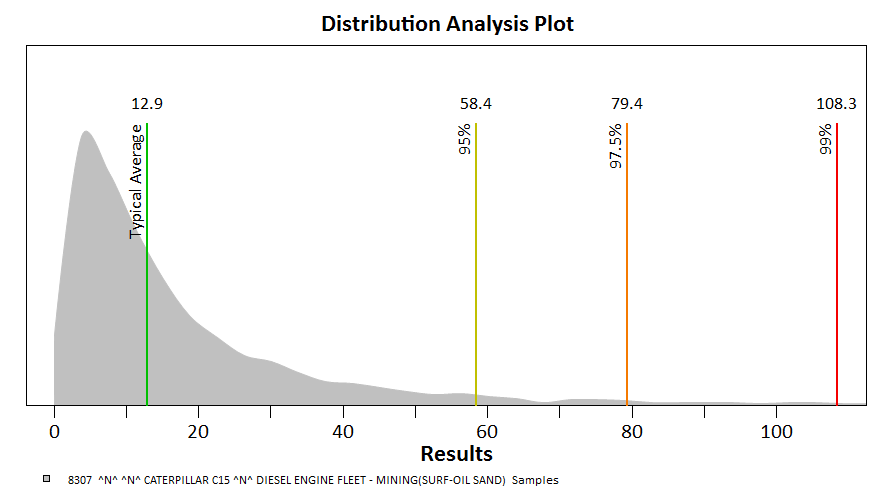Fluid Life strives to increase your profitability and reliability by improving the ROI of your oil analysis program. One of the ways to improve the effectiveness of oil analysis is to have the best flagging limits; cutting down on nuisance flags and alerting problems. In our efforts to give you the best flagging limits, we perform statistical updates approximately yearly to our flagging limits. The updates are aimed at ensuring that our oil analysis interpretations are as current as your ever-changing technology.
WE HAVE UPDATED OUR HISTOGRAMS FOR SAMPLE RANK AND THE FLAG LIMITS DERIVED FROM THEM.
Based on the industry you’re in and the specific type of equipment you have, we’ll find the most specific flagging limits we can to generate the most relevant flag alerts for you.
IF YOU HAVE ALREADY GIVEN US A SET OF LIMITS TO USE, WE’LL CONTINUE TO APPLY THEM FOR YOU AS BEFORE.
We are using these to make new flag limits for Oxidation, Nitration, Sulfation, and Soot on diesel engine applications. In the past, flag limits for these tests were very general. Now, for example, all Cummins QSK60 engines in the oil sands will be flagged separately from the Cummins QSK60 engines in coal mining and separate from any Cummins QSK45 engines. Additionally, tiered diesel engine limits (Tier 1, 2, 3 & 4) for FTIR based tests are being used in applicable circumstances.
DUE TO THE NEW LIMITS, YOU MAY SEE FLAGS WHERE YOU DIDN’T COMMONLY SEE THEM BEFORE:
The new limits are industry and more equipment specific, so getting the lab the correct manufacturer and model information is even more important than it was before. You may notice some cases where the flag limits are now lower and a few that are now higher, this is mostly likely due to the new limits being more specific to the type of equipment reported to the lab. If you have any questions on your results, please feel free to contact the lab as always.
If you would like to give additional information (the sub-model feature is only available to Fluid Life at this time) about the units or components at your site, please contact Fluid Life.
FOR WINROAST USERS:
To get the benefits of this, you must update your WinRoast install to the latest release now version 2.5. Otherwise, you will be seeing different limits and Sample Rank scores in WinRoast and on your reports then the laboratory.
To update your WinRoast select “Check for Updates” from the Help menu:

Or, you can manually update after downloading the updates from: https://mylab2.fluidlife.com/wrDownload/login.html. By default your remote name and serial number are the username and password. You can find your remote name and serial number from by selecting File > Preferences menu. Follow the instructions available at the link.
DOES YOUR SITE HAVE UNIQUE OPERATING CONDITIONS OR UNIQUE ASSETS?
We understand that our flagging limits work the best with large quantities of the same component across large industries that are tested at our labs. If your site has unique operating conditions, assets, or has particular reliability goals, then site specific flagging limits could be optimal for you.
Learn more about site specific flagging limits.
HOW DO WE FLAG?
For its statistically generated flagging limits, Fluid Life segments its data into the most specific categories (using fields such as manufacturer, model, industry, etc.) and uses its vast oil sample database to create a representative histogram. Then limits are set to flag a specific percentage of abnormal samples. This ensures that as your technology evolves, so does your oil analysis.
